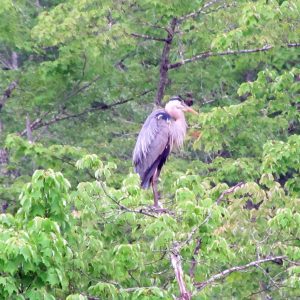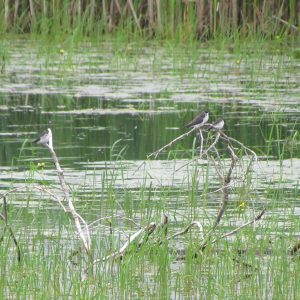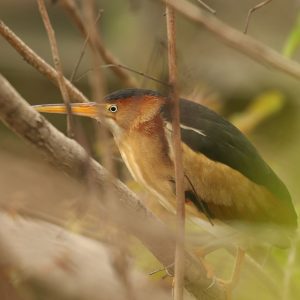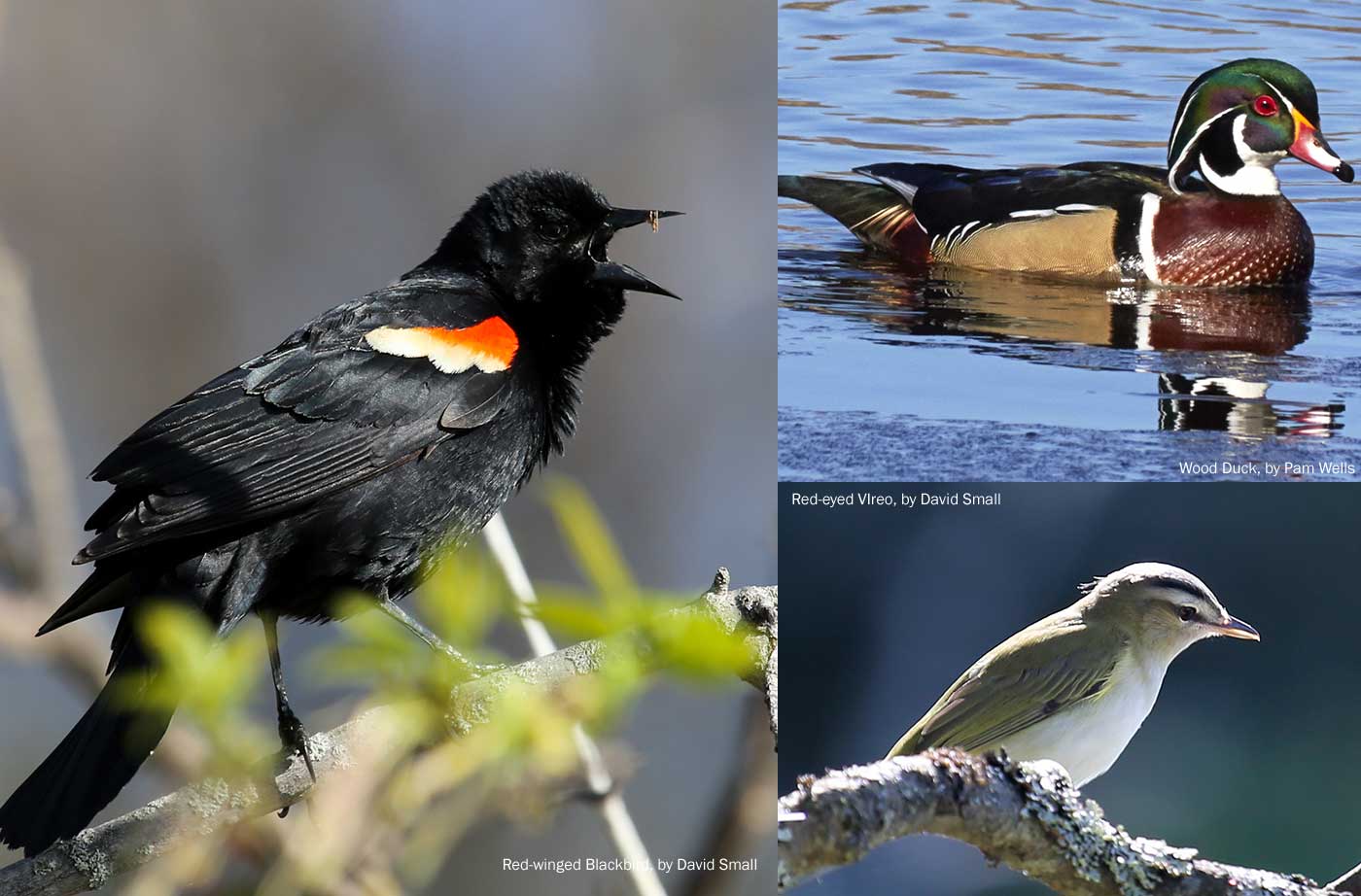Was it an unconscious reaction to the excessive heat? Were we mesmerized by the memory of the “tick-it, tick-it” calls of rails we’ve heard in years past? Whatever it was drew us recently to two marshy lakes to look for particularly interesting birds. These two areas happen to be local birding hotspots for us and are places we’ve been birding at for more than 40 years!
But we hadn’t been lately, at least not to one of them. At the mouth of Wilson Stream, where it flows into Annabessacook Lake in Monmouth, lies a special place locally known as “the Waugan.” Over the years, we’ve seen and heard many fascinating birds here—American Bitterns giving their low pumping calls; Yellow-throated Vireos singing their slow, burry songs; Marsh Wrens chattering in the cattails; Sora and Virginia Rails calling from the base of the reeds.

A Great Blue Heron was among the rich birdlife the authors encountered at another local birding spot, known as the Waugan, in Monmouth near the mouth of Wilson Stream where it empties in Annabessacook Lake. (Photo by Jeff Wells)
During the years that have passed since our first visit here together, a number of things have changed—including the much higher level of traffic! Yet amazingly, most of the same bird species were still there. We went hoping for an American Bittern or a Sora but dipped on both. We did hear a distant Yellow-throated Vireo, a species for which this place is quite well known among birders. Marsh Wrens and several Virginia Rails sounded from the marsh. And lots of other birds made there presence known—Hermit Thrushes and their close relative, the Veery. Red-eyed Vireos (we call them “preacher birds” for their propensity for sing all day long!) and Warbling Vireos. A handsome Great Blue Heron posed for us on a small tree on the edge of the water. Several families of Wood Ducks puttered along near the wooded shores.
Once we had our fill of the Waugan, we continued on to another favorite old birding haunt, the causeway at the south end of Cobbosseecontee Lake, a spot sometimes referred to locally as “the Purgatory.” Here, a narrow road crosses through the lake and marsh. A large area of cattail-dominated habitat occupies the south side of the road, and smaller segments of marsh are found along the shores to the north in a large, shallow bay.
Decades ago, the local lake association used to draw the water down every fall, turning this bay into something that resembled a large coastal mudflat. And like a coastal mudflat, this mucky lakebed attracted shorebirds galore, including Pectoral Sandpipers in the hundreds at least a few times. These days, in spring and fall, the bay often attracts a variety of ducks and other waterbirds.

These Tree Swallows, recently fledged, waited patiently for one of their parents to arrive with some insect food at the marshes at the south end of Cobbosseecontee Lake. (Photo by Jeff Wells)
We pulled off the busy road into a turnout just beyond the bridge and rolled down the windows. Immediately, right beside us erupted the machine-like chatter of a Marsh Wren from the cattails. Then another and another. On a little branch jutting over the water sat four newly fledged Tree Swallows. When a shiny blue-green-backed adult arrived, fluttering in front of them, all four began calling at once, their mouths agape as they waited to be fed.
We stepped out of the car (watching carefully for traffic) to get a little closer for a photo.

Least Bitterns are rarely seen in Maine due to their small size and secretive habits. Most detections are by voice, but the authors were very fortunate to catch a glimpse of one recently at a favorite local birding locale. (Photo by Tony Castro, courtesy of Wikimedia Commons.)
That’s when a tiny heron that had been hidden on the water’s edge flew up and away. It showed a black head and back and bold orangey patches in the wings. A Least Bittern! This is a rather rare species in Maine (they are more abundant in the southern U.S.) but a species that has been found at this same location in years past. According to eBird, Least Bitterns have been found at only three spots in Maine this year. This is in part because they are very secretive birds, often only identified by their low “coo-coo-coo” calls. We were lucky to catch even a glimpse of this beautiful bird.
As we continued birding—observing several families of Canada Geese, admiring close-up views of displaying male Red-wing Blackbirds, their brilliant red epaulets flashing—we were fortunate to catch another glimpse of the Least Bittern and felt very satisfied, and we “took the long way home” to get in a little more birding along the way.
As we drove, we wondered if it was nostalgia that drew us out. Whatever it was, we certainly felt rewarded. We hope you will be, too, on your next birding foray!
—Allison and Jeff Wells

Among the other species the authors saw during their marshy birding adventure: Red-winged Blackbirds, Wood Ducks, and Red-eyed Vireos











Leave a Reply